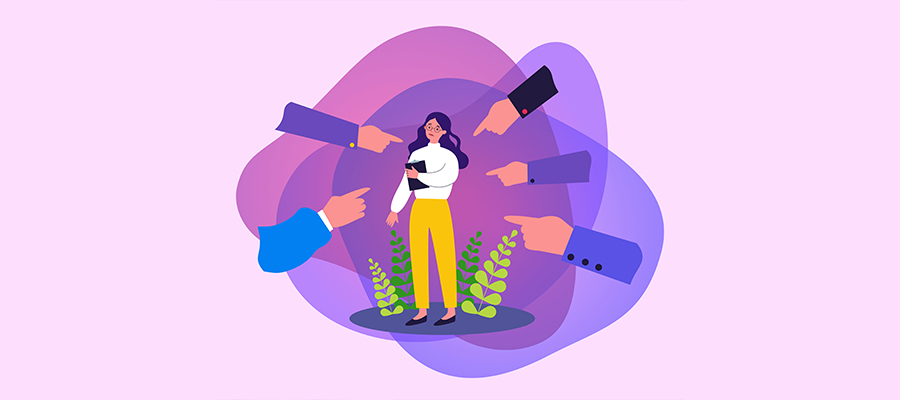Guilt is a tricky emotion. It can feel like a moral compass, nudging us to do better, or it can feel like a wrecking ball, tearing down our sense of self. I’ve seen it in the faces of clients sitting across from me, their shoulders heavy with the weight of something they did or didn’t do. I’ve felt it in my own life, too, that sinking feeling in the pit of my stomach when I realize I’ve hurt someone or fallen short of my own expectations.
But here’s the thing: guilt isn’t the only way to respond to our mistakes. There’s another path, one that’s less about self-punishment and more about growth. It’s called accountability. And understanding the difference between the two can change not just how we see ourselves, but how we move through the world.
What Guilt Does to Us
Guilt is a natural emotion, hardwired into our brains to help us navigate social relationships. It’s what makes us feel bad when we’ve hurt someone or violated our own values. In small doses, guilt can be useful. It can motivate us to apologize, make amends, or change our behavior. But when guilt becomes chronic, it stops being helpful and starts being harmful.
I’ve worked with clients who’ve carried guilt for years over a harsh word spoken in anger, a missed opportunity to show up for someone, or a decision that didn’t turn out the way they’d hoped. Over time, that guilt can morph into shame, a deeper, more insidious emotion that whispers, You’re a bad person. Shame doesn’t just make us feel bad about what we’ve done; it makes us feel bad about who we are.
And that’s where guilt becomes a problem. When we conflate our actions with our identity, we get stuck in a cycle of self-criticism and self-punishment. We replay our mistakes over and over, convinced that we don’t deserve forgiveness not from others, and certainly not from ourselves.
The Power of Accountability
Accountability, on the other hand, is about taking responsibility without losing sight of our humanity. It’s the difference between I did something wrong and I am wrong. Accountability allows us to acknowledge our mistakes, make amends, and learn from the experience without getting trapped in shame.
One of the most powerful moments in therapy is when a client shifts from guilt to accountability. I remember someone I worked with let’s call them Alex who had been carrying guilt for years over a past relationship. Alex had made some mistakes, as we all do, and those mistakes had contributed to the relationship’s end. For years, Alex had been stuck in a cycle of self-blame, convinced that they were fundamentally flawed.
But as we worked together, Alex began to see their actions in a new light. They started to understand that while they had made mistakes, those mistakes didn’t define them. They began to take accountability not just for what they’d done, but for how they wanted to grow. And that shift changed everything.
The Neuroscience of Guilt and Accountability
From a psychological perspective, guilt and accountability activate different parts of the brain. Guilt often triggers the amygdala, the brain’s fear center, which can lead to a fight-or-flight response. This is why guilt can feel so overwhelming it’s like an alarm going off in your head, signaling danger.
Accountability, on the other hand, engages the prefrontal cortex, the part of the brain responsible for reasoning, problem-solving, and empathy. When we approach our mistakes with accountability, we’re able to think clearly about what went wrong and how to fix it. We’re also more likely to extend empathy to ourselves, which helps break the cycle of shame.
How to Move from Guilt to Accountability
If you’re struggling with guilt, here are a few steps to help you shift toward accountability:
- Acknowledge the Emotion: Start by naming what you’re feeling. Say to yourself, I’m feeling guilty because I hurt someone I care about. Naming the emotion helps you separate it from your identity.
- Separate the Action from the Person: Instead of saying, I’m a bad person, try, I made a poor choice. This small shift can help you see the behavior as something you can change, rather than a reflection of who you are.
- Make Amends: If you’ve hurt someone, take steps to repair the relationship. This might mean apologizing, offering to make it right, or simply listening to how the other person feels.
- Learn and Grow: Ask yourself, What can I learn from this experience? Use the mistake as an opportunity to grow, whether that means setting better boundaries, improving your communication, or practicing self-compassion.
- Let It Go: Once you’ve taken responsibility and made amends, remind yourself that you’re human. Everyone makes mistakes. What matters is what you do next.
The Gift of Accountability
Accountability isn’t always easy. It requires us to face our mistakes head-on, without hiding behind excuses or self-pity. But it’s also one of the most empowering things we can do. When we take responsibility for our actions, we reclaim our power. We stop being victims of our guilt and become active participants in our growth.
And here’s the beautiful thing: Accountability doesn’t just help us heal it helps others heal, too. When we own our mistakes and make amends, we show the people in our lives that we value them. We show them that they matter.
So, the next time guilt comes knocking, take a deep breath and ask yourself: Is this guilt helping me grow, or is it keeping me stuck? If it’s the latter, try shifting toward accountability. It’s not about letting yourself off the hook; it’s about giving yourself the chance to do better.
Because at the end of the day, we’re all works in progress. And that’s okay.

